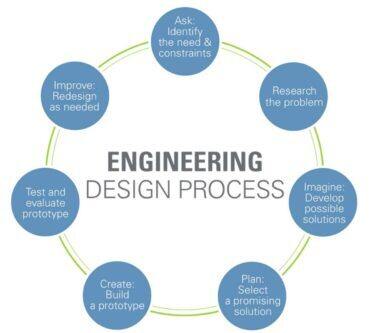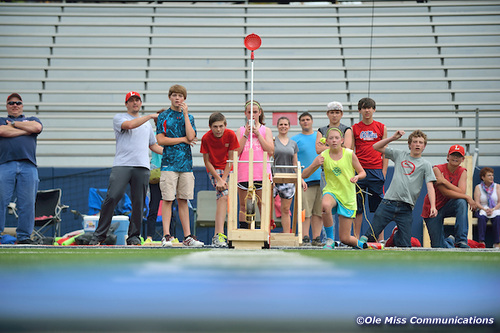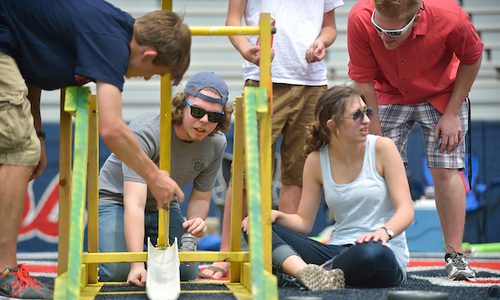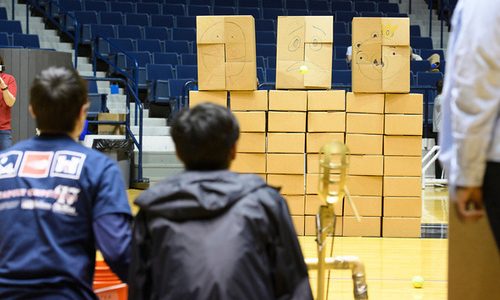About
The Division of Outreach, the School of Engineering, and the Center for Mathematics and Science Education at the University of Mississippi will host an in-person Catapult Competition in 2024!!
Teams of 2-4 students in middle school and high school are invited to participate in this exciting event. The 2024 Annual Catapult Competition will be held on April 4, 2024 at Tad Smith Coliseum on the campus of the University of Mississippi. Registration begins at 8:00am and the award ceremony will begin at 3:00pm.
On the day of competition, the surgical tube catapults will go through a rigorous safety check to ensure construction rules and specifications were followed correctly.
Teams will compete in 5 challenges: Design, Skeeball, Bowling, Siege the Castle, and Art & Aesthetic. Awards will be given in each category. An overall winner will be determined from the total of the event scores.
Schedule of Events
Registration is open for teams to enter.
Deadline to register: March 21, 2024
April 4, 2024 Schedule of Events:
8:00-9:30 am Registration and Safety Check
8:00-9:30 am Team photos with catapult
8:00-11:00 am Skeeball-Competition 1
8:00-2:45 am Judging Begins
11:00 am -12:30 pm Lunch
12:30-12:45 pm Teams prepare catapult for afternoon competitions
12:45-1:45 pm Launching Competition 2 (Siege the Castle)
1:45-2:45 pm Launching Competition 3 (Bowling)
2:45-3:00 pm Teams may dismantle and load catapults (optional)
3:00-3:30 pm Award Ceremony
**PLEASE NOTE: Judging will take place from 8:00-2:45 throughout the day. There will be 2 sets of judges. Judges will talk with teams through the competitions as well as watch the catapults in action.
Design Specifications - 2024
Scoring
Catapults must meet all required specifications to participate in the challenges outlined below.
Design Challenge:
Clarity of speech (5)
Understanding of Physics (10)
Enthusiasm (5)
Understanding by all Team Members (10)
Description of Design Process (10)
List of Materials (10)
Scale version of Assembly (10)
Skeeball Challenge:
1 point: Making it past the 6 ½ ft start
4 points: Making it into Target 1 (30 feet)
6 points: Making it into Target 2 (36 feet)
2 points: Making it into Target 3 (41 feet)
10 points: Making into Targets 4 and 5 (46 ft corners)
Other rules apply – see document
Bowling Challenge:
1 point: for each “pin” (2-liter bottle)
SPARE: All 10 pins knocked 10 in 2 throws
Points are 1st bean bag pins plus 10
STRIKE: All 10 pins knocked down with 1 throw
Points are 10 plus sum of next 2 bean bags
10th Frame: Earns a 3rd bean bag for STRIKE or SPARE
Art & Aesthetic Challenge:
This challenge is about decorating your catapult. You may choose to decorate the catapult in anyway (painting, drawing, adding decorative items, etc.) in order to make it look aesthetically pleasing. *Paint and decorations cannot interfere with the safety of your catapult.
OVERALL COMPETITION WINNERS:
Teams will be ranked based on the number of points they received. Ranks will go only to 12th place, meaning 12th place and beyond will all be ranked at 12th place. Sums of the ranks from each of the challenges will determine the rank for the Overall Score.
Engineering Design Process
Teams will be asked about their use of the Engineering Design Process.

Registration
Click blue button above to register your team.
Registration Fee: $75 per team
Deadline for Registration: March 21, 2024
For additional information regarding specifications, rules, or registration, please contact the Center for Mathematics and Science Education: umcmse@olemiss.edu
Extra Resources
The following two videos were filmed from the 2016 Catapult Competition. They show a UM Engineering student building the base for a catapult. These videos should give teams an idea of the process involved.
Video: Catapult Step 1 – Frame Base
Video: Catapult Step 2 – Frame and Bearing Mount
Contact Us
For additional information, please contact:
Address: CMSE, The University of Mississippi, P.O. Box 1848, University, MS 38677-1848
Phone: (662) 915-6621
Fax: (662) 915-1762
Email: umcmse@olemiss.edu








